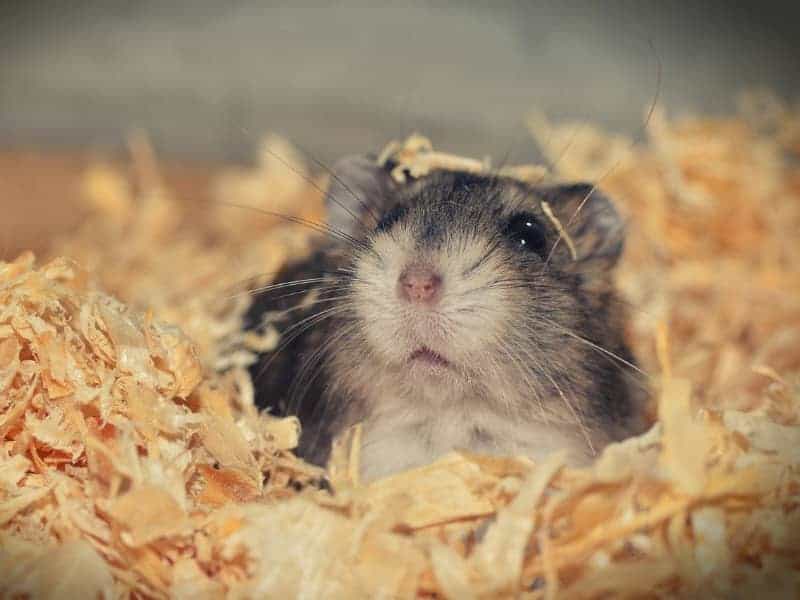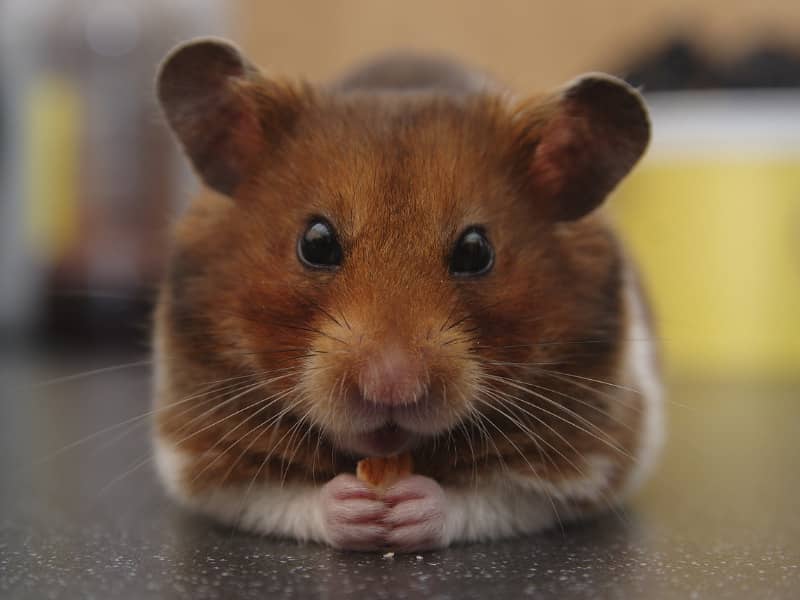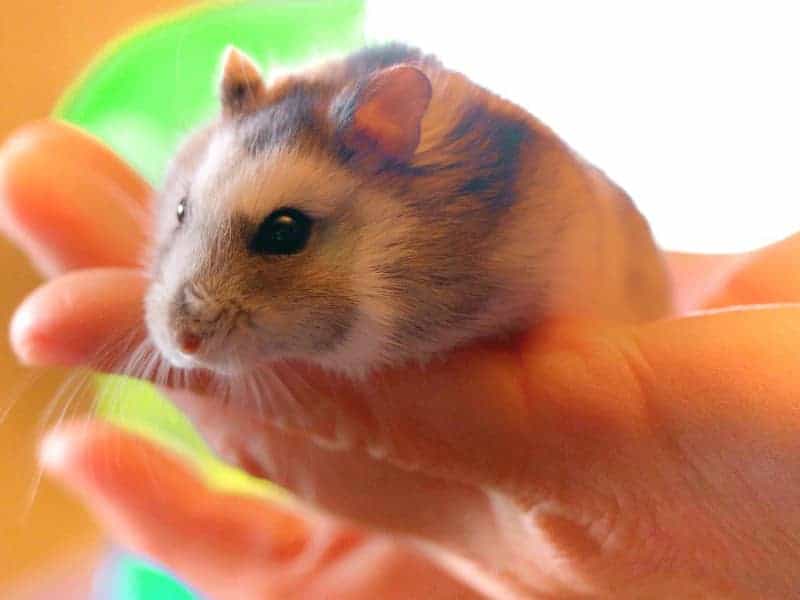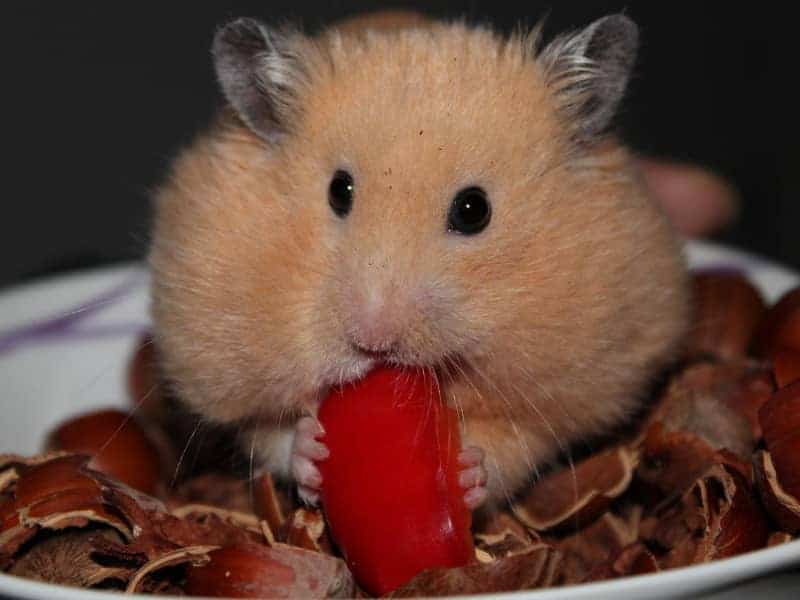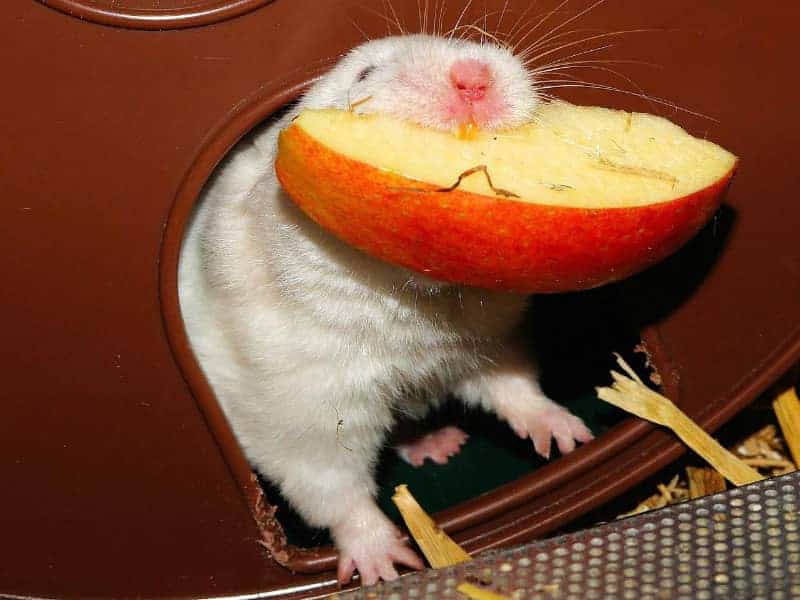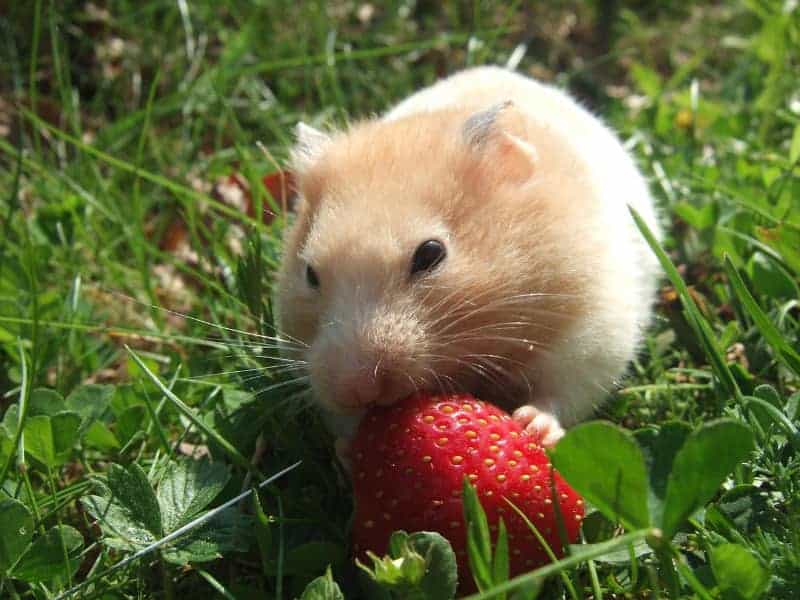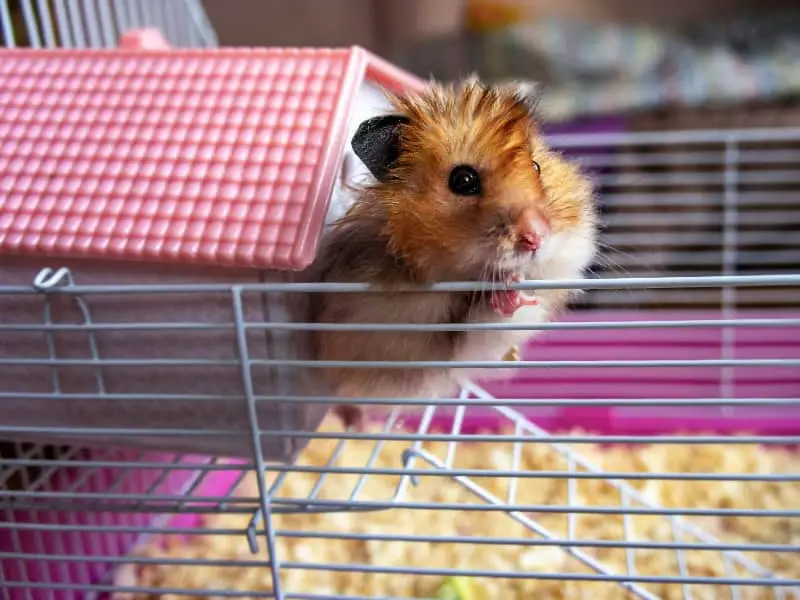
Hamster cage species appropriate
A species-appropriate hamster cage is more than just a shelter for your little friend. It's his home, his playground and his fortress. Here you will learn why a species-appropriate cage is so important and what it means for the well-being of your hamster.
- Hamster cage species appropriate
- Species appropriate hamster cage - Important for the well-being of the hamster.
- Basics of a hamster cage suitable for the species
- Hamster cage species appropriate - furnishings and equipment
- Hamster cage species appropriate - tips for choosing a location
- Species appropriate hamster cages - care and cleaning
- Common mistakes and how to avoid them
- Conclusion: hamster cage species appropriate
Species appropriate hamster cage - Important for the well-being of the hamster.
A species-appropriate hamster cage is not just a question of aesthetics or comfort. It's about much more: the mental and physical health of your hamster. Hamsters are curious and active animals by nature. They need space to explore in order to stay mentally and physically fit.
In a cage that meets their needs, they feel safe and secure. This not only influences their behavior, but also their stress levels. A stress-free hamster is a happy hamster, and a happy hamster has a longer life expectancy and fewer health problems.
Effects on health
A species-appropriate cage has a direct impact on your hamster's health. A small or poorly equipped cage can lead to a number of health problems, such as obesity, joint pain or even behavioral problems.
A well-designed cage, on the other hand, allows your hamster to move freely and explore its surroundings. This promotes blood circulation, strengthens the immune system and keeps the hamster in good physical condition.
Long-term advantages
A species-appropriate hamster cage offers more than just short-term benefits for your hamster's health and well-being. The long-term effects are at least as important. A species-appropriate cage encourages the hamster's natural behaviors, such as digging, climbing and exploring.
This keeps the animal mentally stimulated and active, which in turn minimizes the risk of many health problems. Active hamsters are less prone to obesity and behavioral disorders, which has a positive effect on their lifespan.
You'll also save money on vet visits and medications in the long run. A happy, healthy hamster is also less prone to illness in the long run and requires less medical care. But not only the hamster benefits from a species-appropriate cage, you yourself will also have more fun with an active and healthy animal.
Basics of a hamster cage suitable for the species
Before you decide on a cage, there are some basics you should know. These range from choosing the right material to the size and ventilation of the cage. In the following, we will go into these aspects in detail.
Material selection
The choice of material for a hamster cage is crucial for the safety and well-being of the animal. Plastic cages may seem practical and easy to clean at first glance, but they are not always the best choice. Plastic can bite and chew, which can be dangerous for the hamster.
Wooden cages are a good alternative, but they should be made of untreated wood to prevent harmful chemicals from getting to the hamster. Glass enclosures are also an option, especially because they provide a good view of the hamster and are easy to clean. However, care must be taken to ensure adequate ventilation.
Size and dimensions
The size of the cage is a crucial factor for the well-being of your hamster. A cage that is too small will cause stress and can cause health problems. The minimum size depends on the hamster species, but generally the bigger the better.
In addition to the floor space, the cage should have several levels to satisfy the hamster's urge to move. A high enclosure also provides space for climbing, which is important for many hamster species, and several floors, as well as platforms, increase the floor space and thus the variety of movement for your animal.
Ventilation and light
Proper ventilation is an often underestimated but crucial factor in your hamster's health and well-being. Inadequate ventilation can lead to a poor indoor environment, which in turn can cause respiratory problems and other health conditions.
It is important to choose a cage with enough openings or a lattice roof to ensure a constant exchange of air. Fans or special air cleaners can also be useful, but care should be taken that they are not directed directly at the cage to avoid drafts.
Light also plays an important role in your hamster's well-being. Hamsters are nocturnal, but that doesn't mean they should live in complete darkness. A natural light cycle that corresponds to the day-night rhythm promotes well-being and helps regulate the hamster's biorhythm.
Artificial light should be used sparingly, especially in the evening hours when the hamster is active. Too much light can disturb the natural rhythm and cause stress.
Hamster cage species appropriate - furnishings and equipment
A species-appropriate hamster cage is more than just a container with four walls. Proper furnishings and equipment are critical to the well-being of your little friend. In this section, we'll go over the most important elements: Running wheel and toys, bedding and nesting materials, and food and water dispensers.
Running wheel and toy
A running wheel is a must in every hamster cage. It gives your hamster the opportunity to exercise and burn off energy. Make sure the wheel is the right size for your hamster and has no crossbars that could cause injury.
Toys are also an important part of a hamster cage. It promotes mental stimulation and helps prevent boredom. Simple things like cardboard rolls or small wooden blocks can already be enough.
However, make sure that the toy is safe and does not contain small parts that could be swallowed. A well-equipped cage is a paradise for any hamster and ensures a balanced and contented animal.
Bedding and nesting material for the species-appropriate hamster cage
Choosing the right bedding is critical to your hamster's health. Avoid sharp-edged materials and choose soft, absorbent bedding instead. Hemp or corn pellets are good options.
Nesting material should also be provided. Soft materials such as hay or special nesting wool are suitable here. Avoid cotton, however, as it can form threads that can wrap around the hamster's limbs.
Feed and water dispenser
Proper placement and selection of food and water dispensers is another important aspect to consider. Food bowls should be sturdy and heavy enough so that they cannot be knocked over. It is advisable to provide a bowl for dry food and one for fresh fruit or vegetables.
Water dispensers are usually better than water bowls because they provide a constant supply of fresh water and are less likely to get dirty. Make sure the water dispenser is always well filled and cleaned regularly.
A side tip: Some hamsters prefer running water. In this case, a small drinking fountain pump might be worth considering. It not only provides movement in the water, but also a certain background noise that reminds your hamsters of a natural environment.
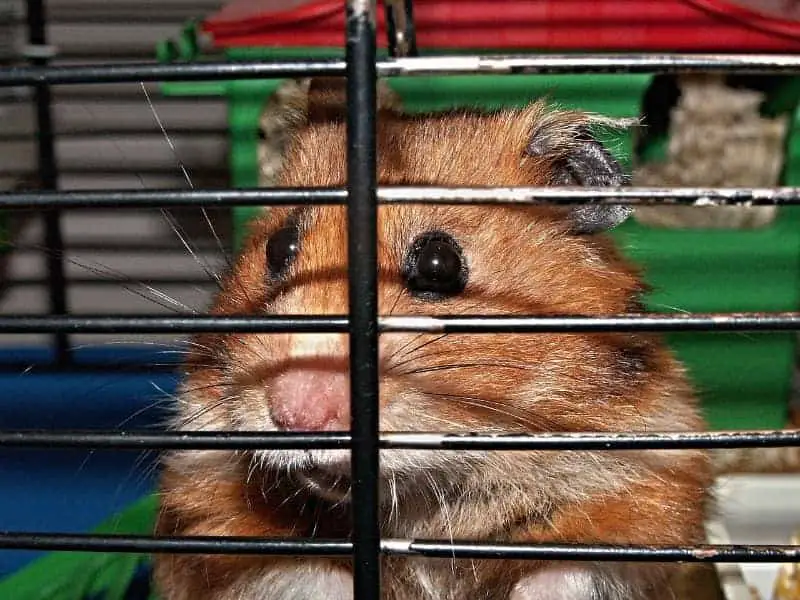
Hamster cage species appropriate - tips for choosing a location
The location of your hamster cage plays a crucial role in the well-being of your little friend. An incorrectly placed cage can cause stress and health problems. In this section, we'll give you tips on the ideal room temperature and humidity, noise levels, and the safety and accessibility of the cage.
Room temperature and humidity
The right room temperature and humidity are crucial for the health of your hamster. A temperature between 20 and 24 degrees Celsius is usually ideal. Too high temperatures can cause heat stress, while too low temperatures can promote colds.
Also pay attention to the humidity in the room. It should be between 40 and 60 percent. Too dry air can irritate the hamster's respiratory tract, while too high humidity increases the risk of mold growth and respiratory diseases.
Noise level
Hamsters are sensitive animals when it comes to noise. A location that is too noisy can cause stress and disturb your hamster's sleep. Therefore, avoid placing the cage near noisy equipment such as televisions or stereos.
Safety and accessibility
Your hamster's safety should always come first. The cage should be placed in a location that is not easily accessible to other pets. In addition, the location should be chosen so that the cage can not tip over or fall, for example, due to vibrations or shocks.
A safe location is also important for yourself. The cage should be easily accessible to make daily care and cleaning as simple as possible. A location at knee or waist level is ideal, as it allows for easy interaction with the hamster without having to bend or stretch.
Species appropriate hamster cages - care and cleaning
A clean cage is not only pleasant for you, but especially for your hamster. Dirt and litter can quickly lead to health problems. Therefore, regular cleaning is essential. In this section you will find tips on cleaning intervals, the use of cleaning agents and the importance of cleanliness for the health of your hamster.
Regular cleaning intervals
The regularity of cage cleaning depends on several factors, such as the size of the cage, the number of hamsters and the type of bedding. In general, the more often, the better. A basic weekly cleaning is sufficient in most cases.
In addition to basic cleaning, daily cleanliness checks should be performed. Remove soiled bedding, food debris and feces as soon as possible to prevent the spread of germs.
Use of cleaning agents
When cleaning the hamster cage, be careful with the use of cleaning agents. Chemical cleaners can give off harmful fumes and affect the hamster's health.
Natural alternatives such as vinegar or lemon juice are largely sufficient to keep the cage clean. If you do want to use a cleaning agent, make sure it is suitable for animals and free of harmful chemicals.
Importance for the health of the hamster
Cleaning your hamster's cage regularly has a direct impact on your little friend's health. A clean cage reduces the risk of numerous diseases, including respiratory infections, skin diseases and parasite infestations.
Dirt and waste are breeding grounds for bacteria and fungi that can seriously harm your hamster. By cleaning regularly, you minimize this risk and ensure that your hamster can live in a hygienic environment.
Likewise, a clean cage contributes to the overall well-being of the hamster. A clean environment is less stressful and encourages the animal's natural behavior. You will find that a happy hamster is an active and healthy hamster.
Common mistakes and how to avoid them
Even if the intention is there to create a cozy and safe space for your hamster, mistakes can still happen. In this section, we'll go over the most common mistakes and give you tips on how to avoid them.
Hamster cage species appropriate - Wrong materials
A common mistake is the use of unsuitable materials in the hamster cage. For example, some types of plastic can be harmful to hamsters because they may contain toxic substances. Sharp-edged materials or those that splinter easily should also be avoided.
When buying equipment and bedding, always make sure that they are suitable for hamsters. Materials such as untreated wood or special hamster bedding are usually safe and species-appropriate.
Hamster cage species appropriate - Insufficient size
Another mistake is underestimating the size of cage needed. A cage that is too small can cause stress and health problems. Before buying, find out the minimum cage size requirements that are suitable for your hamster species.
Here is a chart listing the minimum cage dimensions for various hamster species:
| Hamster species | Minimum footprint (cm²) | Minimum height (cm) | Number of levels |
| Golden hamster | 4000 | 30 | 1 |
| Dwarf hamster | 3000 | 25 | 1 |
| Roborowski hamster | 2500 | 20 | 1 |
| Chinese striped hamster | 3000 | 25 | 1 |
Note that these are minimum requirements. The more space you can offer your hamster, the better.
I hope this chart helps you choose the right cage for your hamster.
Cleaning neglect
Neglecting cleaning is a mistake that can have serious consequences for your hamster's health. A dirty cage is a breeding ground for bacteria, fungi and parasites. These can cause respiratory illnesses, skin infections and other health problems.
Otherwise, inadequate cleaning can also cause psychological stress for the hamster. A dirty environment is unpleasant for the hamster and can lead to behavioral changes such as aggressiveness or withdrawal.
To avoid this mistake, it is important to maintain a regular cleaning schedule. This includes daily cleanliness checks as well as weekly basic cleaning. A clean cage is not only more comfortable for the hamster, but also makes it easier for you as the owner to care for and observe the animal.
Conclusion: hamster cage species appropriate
A species-appropriate hamster cage is not only a question of size or equipment, but an interplay of various factors that influence the well-being and health of your little friend. From the choice of materials and furnishings to the choice of location and regular care and cleaning, every aspect has its importance.
A well-designed and maintained cage encourages the hamster's natural behavior, minimizes stress and health risks, and provides a higher quality of life.
Author

-
Garden animal - A life with nature
Welcome to my animal blog! My name is Dirk and I am happy to take you on my journey through the fascinating world of animals and gardening.
Born 54 years ago, I have had an insatiable curiosity for the animal world around me since childhood. Although I have moved professionally in other industries, my true passion has always been animals and nature. It is remarkable how a small garden has become such an important part of my life.
Many of my fondest memories are associated with the animals that share our home. Whether it's the curious squirrels that scurry across the trees in the morning, the colorful variety of birds that visit our feeders, or the busy bees and butterflies that pollinate our flowers, every moment with them is invaluable to me.
This blog is my contribution to share my experiences, discoveries and insights with like-minded people. Here I will share stories of unforgettable encounters with animals, give tips on gardening and creating wildlife-friendly habitats, and take you on my journeys through nature.
Thank you so much for being here!
Cordial,
Dirk aka garden animal
Last posts
- 27. February 2024PetsVeganes Hundefutter – Grün und Gesund?
- 18. January 2024ChickensOregano für Hühner
- November 27, 2023HamsterDiurnal hamsters
- November 24, 2023HamsterHamster hammock

